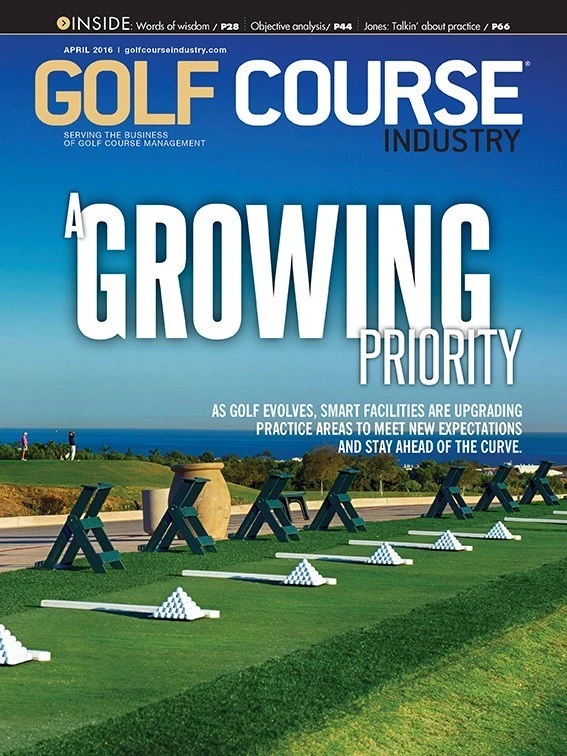I can’t tell you how many times I visit golf course superintendents during the summer and am amazed at the organizational capacity of some of them. On the other hand, there are those that have just about zero organizational skills and I wonder how they get anything done.
From a personal standpoint, I can clearly see defined times in my life where I have been both organized and disorganized. Depending on what phase I was in, my productivity and the quality of my work was definitely impacted. In some cases, it had to do with distractions and at other times it simply had to do with the fact that we’re all expected to do more with less.
Since becoming a professor (and even before), I have made an attempt to be productive while trying to juggle many things at once. In some respect, the fact that I usually need only four to five hours of sleep per night and only eat a single meal per day has resulted in increased productivity. However, I noticed in 2015 that my productivity was falling off and that some things were starting to fall through the cracks. After some reflection, I could clearly see where things were working and where they weren’t.
My time as an undergraduate at Penn State represents a slow progression of the impact of organization and time management on an individual’s productivity. Despite being an A student in high school, my first semester at Penn State ended in something like a 2.33 GPA. After that, I purchased a day planner from FranklinCovey and started spending 30 minutes a day tracking my time and planning my day. Within a year, my GPA was in the high 3.8s.
As I moved on to graduate school, the hard copy day planner was replaced with a PalmPilot. I had trouble adapting to it and eventually my calendar system fell into disarray. Despite not using a day planner, I was successful in graduate school. I equate this to the fact that my entire focus was solely on my responsibility as a graduate student. This didn’t really change when I took my first job at UConn, where I dedicated 100 percent of my focus on work.
I found having a single focus was my substitution for organization. It’s not like I was totally disorganized, but dedicating my mind and time to one thing allowed me to accomplish a lot. As I moved on to Penn State and had what I felt like were more responsibilities, I knew something had to change.
By this time, using digital calendars like MS Outlook were the norm and I did my best to schedule my meetings so I didn’t lose track of important events. I didn’t, however, resort to the level of detail that I once had with my trusty FranklinCovey planner. I simply kept track of important calendar events like meetings, conferences and similar activities.
This was fine to keep me from missing a meeting or seminars, but it still didn’t allow me to balance things as well as I would have liked and things again started falling through the cracks.
In January, I decided to get focused again on tracking my time. For the last few months, I have been tracking every 30-minute block of my day via Google Calendar. I color code things based on teaching, research and extension as well as meetings and personal time that I spend doing things outside of turf.
I was spending eight to 10 hours dealing with emsail each week. To combat this, I have scheduled two 30-minute blocks per day for email.
I was spending way too much time on social media for personal and work purposes. By using one hour per week to “schedule” posts, I have managed to maintain a presence without being on it 24 hours a day. Having said that, my iPhone makes it easier to check social media outside of normal work times.
Believe it or not, since being “more organized” I have probably five-plus hours of meetings per week than prior. This is because I have learned that instead of going back and forth on things for extended periods of time, I can run an efficient meeting and get more done in that one-hour block.
I have learned to better delegate tasks to my team and track their progress as well as hold them accountable by having weekly planning meetings. A lot of other things seem to be falling into place simply by tracking my time and designating every 30 minutes of my day to some task or assignment. I have been more productive in both work and play and find that by spending one hour per week planning the next week that I actually have more time to get things completed efficiently.
As part two of this series, I’m going to talk about technology, apps and resources I’m experimenting with to make even better use of my time. Tweet me any tools that you use and I will look into them.

Explore the April 2016 Issue
Check out more from this issue and find your next story to read.
Latest from Golf Course Industry
- Carolinas GCSA raises nearly $300,000 for research
- Advanced Turf Solutions’ Scott Lund expands role
- South Carolina’s Tidewater Golf Club completes renovation project
- SePRO to host webinar on plant growth regulators
- Turfco introduces riding applicator
- From the publisher’s pen: The golf guilt trip
- Bob Farren lands Carolinas GCSA highest honor
- Architect Brian Curley breaks ground on new First Tee venue






